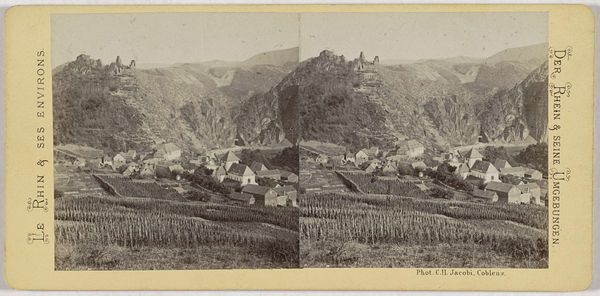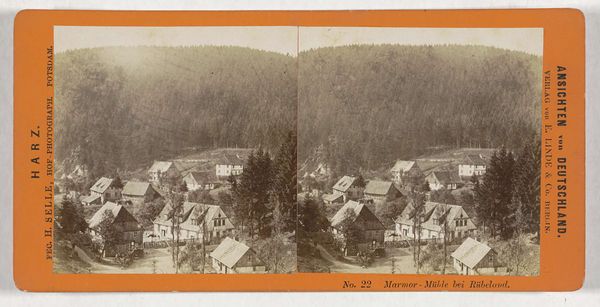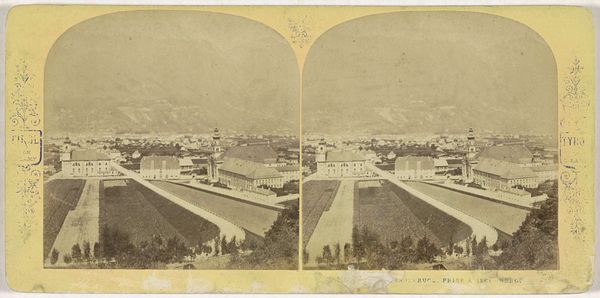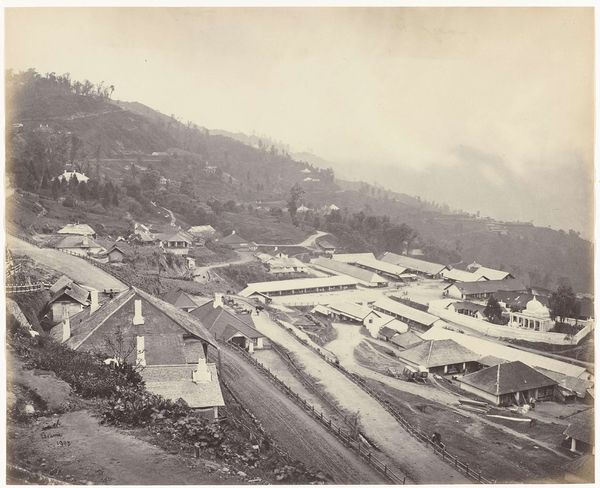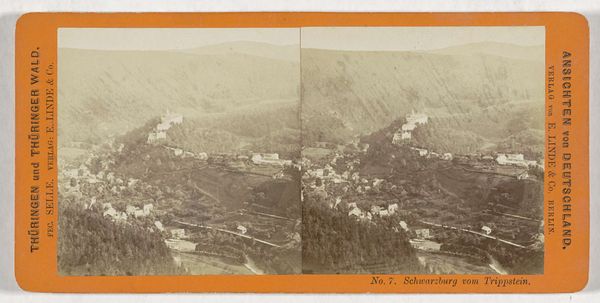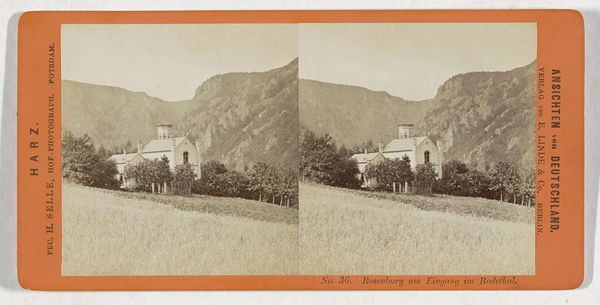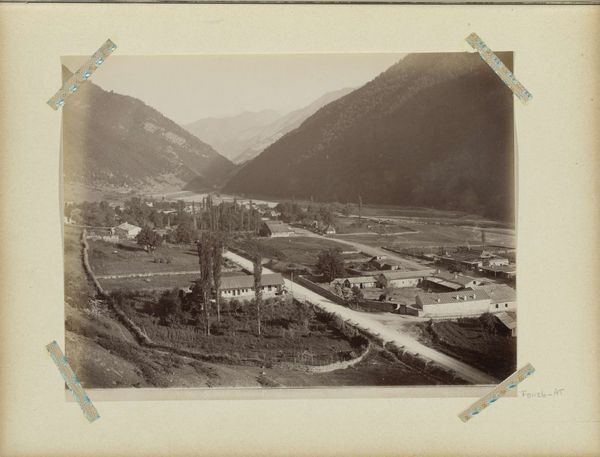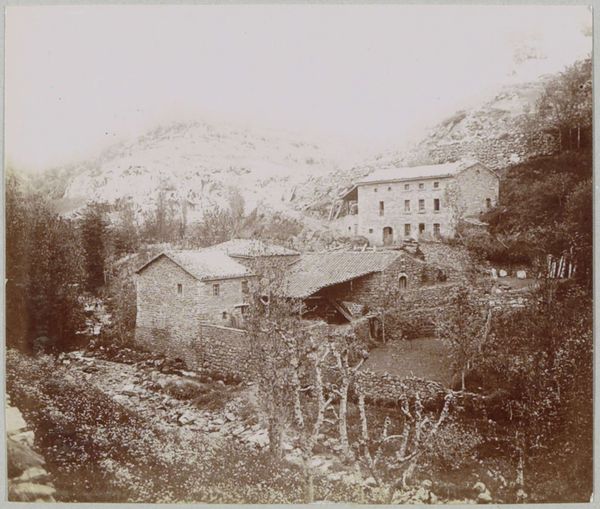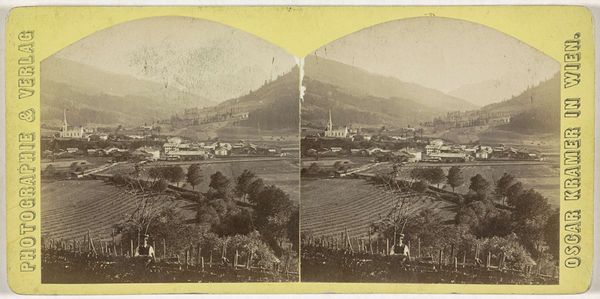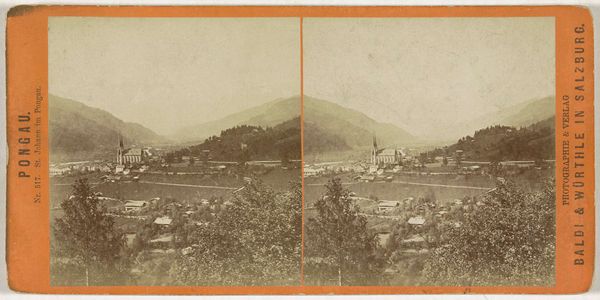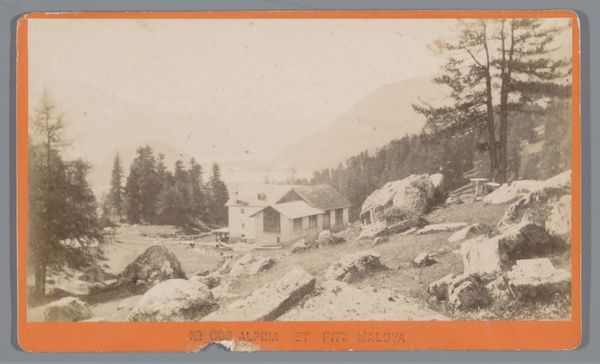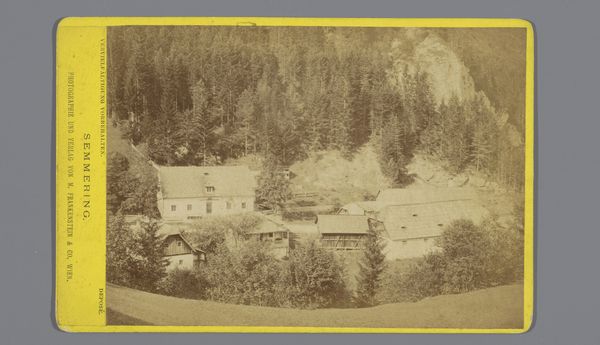
photography
#
aged paper
#
toned paper
#
yellowing background
#
landscape
#
photography
#
personal sketchbook
#
mountain
#
realism
Dimensions: height 85 mm, width 176 mm
Copyright: Rijks Museum: Open Domain
Curator: Looking at this rather faded photograph, what first springs to mind for you? Editor: A wistful quiet, honestly. Like a forgotten postcard from a great-great-grandparent’s blurry memory. What strikes me is the detail despite the yellowing. Curator: Well, that's the charm of aged photography, isn’t it? This is "Brennerspoorlijn bij de Brennerpas," or "Brenner Railway at the Brenner Pass," created in 1878 by Johann Friedrich Stiehm. Editor: A railway through such majestic, almost untouched scenery... There's an inherent tension, isn’t there? Progress versus nature, industry breathing down the neck of paradise. Curator: Exactly. Stiehm was active during a period of enormous industrial expansion, and transportation infrastructure—particularly railways—were reshaping Europe’s social and economic landscape. This image freezes that transformative moment, capturing the interaction of the old ways of life with modernity’s encroaching presence. Editor: It's more than just a landscape shot; it feels loaded with social commentary, even if subtly delivered. That church spire amidst what looks like simple housing… And then those stark, straight lines of the railway cutting across. Was Stiehm consciously highlighting that contrast, or just documenting the world around him? Curator: Both, I’d argue. While commercial photography, especially landscape photography, catered to romantic ideas of untouched nature, artists often reflected underlying social realities. Think of it: new accessibility, urbanization… photography provided the emerging middle classes with both visions of what they had access to, and what they might be losing. Editor: I guess even an ostensibly 'objective' photograph becomes a kind of argument, or at least a document open to interpretation. So this aged, toned paper then adds another layer – time itself becomes another force impacting this place and its meanings. Curator: Precisely. It serves as a visual reminder of the photograph's own journey through history. In Stiehm’s era, railways symbolized unprecedented acceleration and connectivity. Looking at the print now, we gain an expanded view on modernity's effect not just on landscape, but on ourselves. Editor: I'll think about the railway, next time I take a train somewhere!
Comments
No comments
Be the first to comment and join the conversation on the ultimate creative platform.
